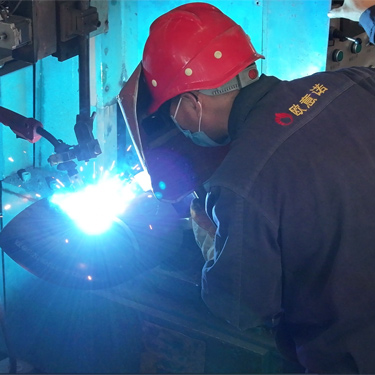
Nov . 08, 2024 02:23
Back to list
Regulating Devices for Efficient Pressure Management in Various Applications
The Importance of Pressure Regulating Devices in Modern Systems
Pressure regulating devices play a crucial role in various industries and applications, ensuring safe and efficient operations. These devices are designed to control and maintain a specific pressure level within a system, preventing pressure fluctuations that can lead to equipment damage, product loss, or hazardous situations. Understanding the functionality and application of pressure regulating devices is essential for engineers, technicians, and professionals involved in system design and maintenance.
What is a Pressure Regulating Device?
A pressure regulating device is a mechanical or electronic instrument that automatically adjusts the pressure of a fluid within a system to a desired setpoint. These devices can be found in a variety of configurations, including regulators, valves, and relief devices, each serving a unique purpose. The primary function of a pressure regulator is to reduce the pressure of a high-pressure source to a lower, more manageable level.
How Pressure Regulators Work
Pressure regulators operate based on principles of fluid dynamics and mechanical function. When fluid enters the regulator, it experiences a reduction in pressure due to the regulator's internal mechanisms, which may involve springs, diaphragms, or electronic control systems. The regulator continuously monitors the output pressure and adjusts automatically to maintain the desired level. If the pressure exceeds the setpoint, the regulator will close partially or fully, restricting flow until the pressure decreases. Conversely, if the pressure falls below the desired level, the regulator opens to allow more flow through the system.
Applications of Pressure Regulating Devices
1. Oil and Gas Industry In the oil and gas sector, pressure regulating devices are essential for controlling the pressure of natural gas and oil as they flow from extraction points to processing plants. Maintaining appropriate pressure levels prevents leaks and ensures smooth transportation and processing of these resources.
2. Manufacturing In manufacturing environments, pressure regulators are critical for systems involving pneumatic tools, hydraulic presses, and other machinery. They ensure that equipment operates within safe pressure ranges, thereby enhancing performance and preventing costly breakdowns.
pressure regulating device

3. Healthcare Pressure regulators are vital in medical gas systems, such as oxygen delivery systems for hospitals. These regulators ensure that patients receive a consistent and safe supply of medical gases at appropriate pressures, which is crucial for patient care.
4. Water Supply Systems Municipal water systems utilize pressure regulating devices to maintain consistent water pressure across varying demand scenarios. This helps prevent pipe bursts and ensures that all consumers receive adequate water pressure.
5. HVAC Systems In heating, ventilation, and air conditioning systems, pressure regulators help maintain appropriate airflow and pressure levels, enhancing system efficiency and longevity.
Challenges and Considerations
While pressure regulating devices are invaluable in many applications, there are challenges associated with their use. One major concern is the need for regular maintenance and calibration to ensure accurate pressure regulation. Over time, devices can become worn or malfunction, leading to ineffective pressure control. Additionally, the selection of the appropriate regulator for a specific application is crucial. Factors such as fluid type, temperature, pressure range, and flow rate must be considered to ensure optimal performance.
Furthermore, in high-demand environments where rapid pressure changes can occur, more advanced electronic regulators may be required. These devices use sensors and control algorithms to provide precise pressure management and can adapt to changing conditions in real time.
Conclusion
Pressure regulating devices are fundamental components of many modern systems, providing safety, efficiency, and reliability across various industries. As technology continues to evolve, the development of more advanced and intelligent pressure regulators will enable even greater precision in pressure management. For professionals and organizations, investing in high-quality pressure regulating devices and ensuring proper maintenance protocols will lead to enhanced operational efficiency and greater safety in their systems. Understanding the importance and functionality of these devices is crucial for anyone involved in system design, operation, or maintenance.
Latest news
-
Safety Valve Spring-Loaded Design Overpressure ProtectionNewsJul.25,2025
-
Precision Voltage Regulator AC5 Accuracy Grade PerformanceNewsJul.25,2025
-
Natural Gas Pressure Regulating Skid Industrial Pipeline ApplicationsNewsJul.25,2025
-
Natural Gas Filter Stainless Steel Mesh Element DesignNewsJul.25,2025
-
Gas Pressure Regulator Valve Direct-Acting Spring-Loaded DesignNewsJul.25,2025
-
Decompression Equipment Multi-Stage Heat Exchange System DesignNewsJul.25,2025

